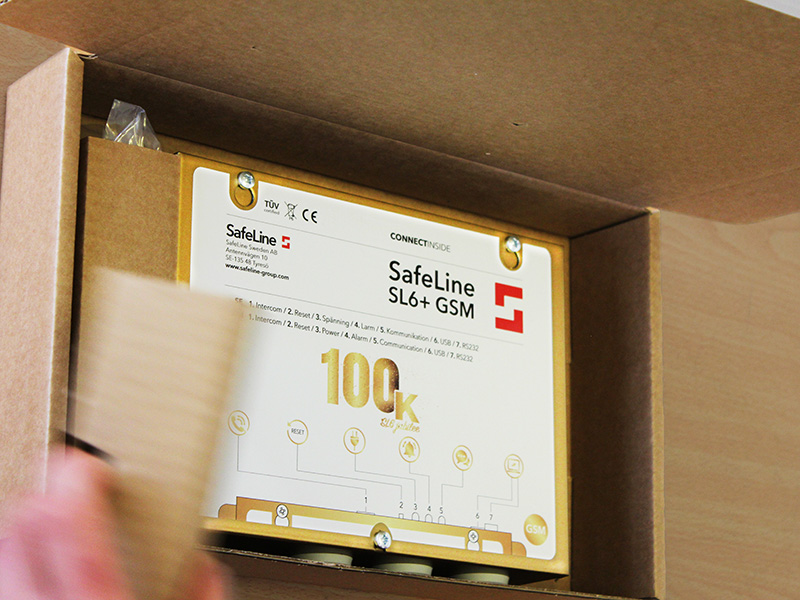Automated check of alarm push button
A new SL6+ firmware allows automated check of alarm push buttons and communication paths.
Within a project Bosch Service Solutions has extended the SafeLine SL6+ firmware with new functions implemented by the manufacturer SafeLine itself.
With the new firmware, the remotely triggered alarm push button can be easily controlled. It is now possible to automatically check all components of the elevator emergency call.
As claimed by normative requirement this includes the communication path and the operational readiness of the emergency call device using the routine message and the emergency power supply battery through the capacity measurement. In addition, it is also possible to automatically check the microphone and loudspeaker by a signal tone and the alarm push button and its cable connection through the mechanical self-test.
Reduce the risk of operator liability
With the new firmware of the SL6+, elevator manufacturers offer operators a holistic elevator emergency solution, and hereby help them to reduce the risk of operator liability significantly.
The remotely triggered alarm push button, for example by Schaefer, can be used in conjunction with the SafeLine SL6+ in social hotspots or public buildings with a high risk of vandalism. " "Alarm push buttons are certainly known to many in the industry. However, only a few used them so far", explains Bodo Adamus, Senior Sales Manager at Bosch Service Solutions.
The reason: It is not enough to control the push button at a fixed interval, so that it is mechanically operated by the built-in electromagnet, but you must also prevent the emergency call transmission to the control center during this self-test.
The new firmware solves problem
"This is where it got complicated. If the transmission is not suppressed during the self-test, the control center seemingly receives a real emergency call, which causes processing costs", Bodo Adamus continues.
In addition, there is neither a trapped nor an examining person in the elevator car, who can tell the control center, whether assistance is needed or the emergency call was only being tested. Depending on the deposited action plan, this can lead to an intervention causing additional costs.
The new firmware of the SL6+ GSM and the SL6+ PSTN solves this problem: The remotely triggered alarm push button is activated via one of the two switch contacts.
During this time, the SL6+ expects the correspondent switching activity of the alarm push button and suppresses the emergency call transmission to the control center. If the push button closes or opens as expected, the test was successful. If it does not switch, the control center is notified about a malfunction.
Automated check of communication paths
The SL6+ GSM connects to a control center via two communication channels, GSM and parallel the (emulated) analogue fixed network. Through free configuration of the first and substitute path, two communication channels are available.
The new firmware of the SL6+ optimizes the behavior in case of a communication path failure. The GSM signal strength and the voltage of the (emulated) analog telephone line are monitored. If the communication path limit value is undershot, a connection test is carried out immediately via the other path.
If the test fails, it means the device can no longer issue a call in the event of an emergency, because both paths have failed. It therefore switches to a potential-free contact, with which, for example, the elevators fire control can be activated. The elevator is then out of service and the risk of liability to the operator is minimized.
www.boschservicesolutions.com






















Write a comment